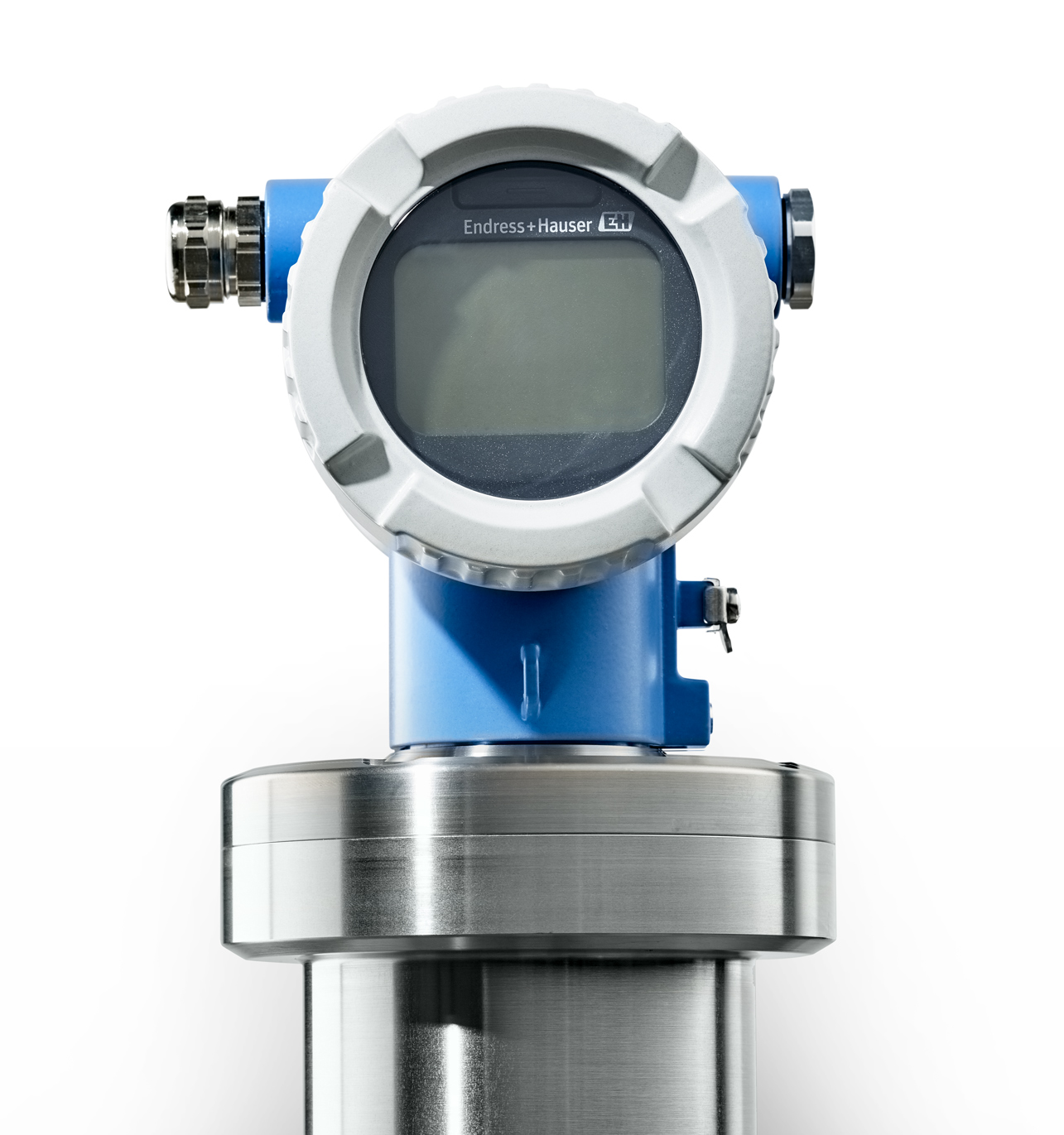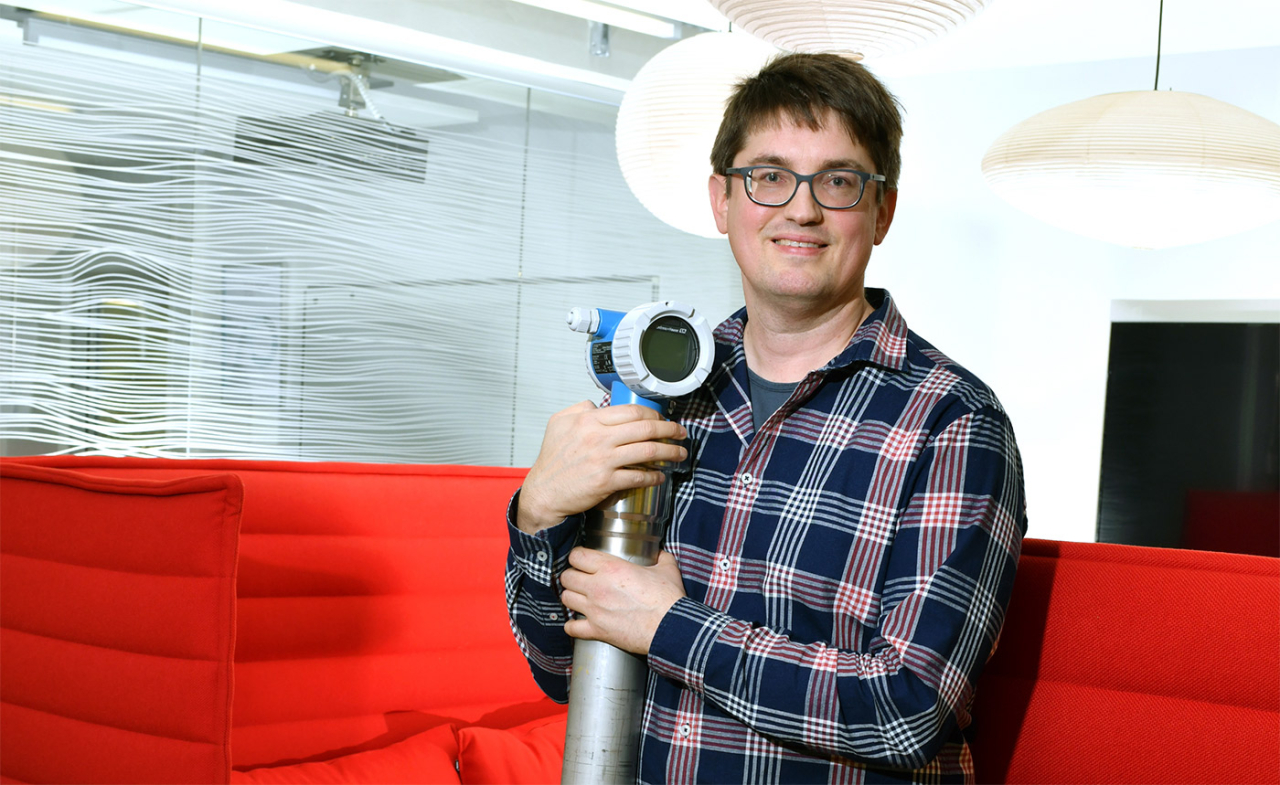High voltage out of nothing
Radiometry gets used when other level sensors run up against their limits. Simon Weidenbruch gave Endress+Hauser’s Gammapilot new energy.

Radiometric level instruments are exotic. However, they are needed when other measuring methods fail, particularly in difficult applications or harsh environments. Gammapilot M FMG60 was one of our most complex level sensors, containing more than 1,000 electronic components. A crystal scintillator converts the gamma radiation into blue light, which is transformed into an electrical signal within a photomultiplier tube, then amplified and analyzed by the sensor. The higher the level of gamma radiation, the deeper the fill level or lower the density is.
Amplifying the signal in the tube requires a high-voltage charge of more 1,000 volts. When we replaced our old Geiger counter with an energy-saving concept in 2009, I wondered if we could do something similar with the photomultiplier tube. I began systematic research into how a high voltage can be generated using as little energy as possible.
1/3
The component count in Gammapilot FMG50 is just one-third that of its predecessor, significantly improving the device’s SIL rating.
Improvement by a factor of 20,000
Initially, it was a ‘Friday afternoon project’ – a weekly window of time that we have for independent studies. The breakthrough came in 2010. I presented a prototype that creates a high voltage from essentially nothing, using just 40 microwatts rather than 800 milliwatts! I took advantage of the fact that the tube has virtually no internal resistance because of the vacuum inside. So, the voltage you apply remains more or less constant because there is nowhere the charge energy can leak away. When I presented the principle, no one wanted to believe that it was possible: Gammapilot in the form of a compact, two-wire transmitter!
The toughest part was minimizing voltage fluctuations, which are caused by temperature differences, to just a few volts. Although we’re unable to directly measure the voltage of the photomultiplier tube without leaking some energy, we found a way to determine the voltage via the measurement data and balance it out with the microcontroller. By 2016, we had swayed all of the skeptics and started to develop the instrument.
Low complexity, high variance
The component count in Gammapilot FMG50 is just one-third that of its predecessor, significantly improving the device’s SIL rating. With respect to measurement performance, FMG60 was just as good – it just weighs a lot more. For explosion protection, it needed galvanic isolation of the power circuitry. The two-wire standard now means we can do away with that, likewise the costly Ex d cabling. This makes the device even better from our customers’ standpoint.
Additionally, we can use a lot of components from the new two-wire platform, such as enclosures and displays. In result, this exotic instrument is available in the same number of variants as our mass-manufactured products. Now that our technology is patented, try as they might, the competition will be hard pressed to develop anything better!

Simon Weidenbruch (45) is working as system architecture expert with Endress+Hauser Level+Pressure in Maulburg, Germany.
Published 01.01.2020, last updated 20.06.2022.
Dive into the world of the process industry through new exciting stories every month with our «changes» newsletter!
Subscribe to newsletter








